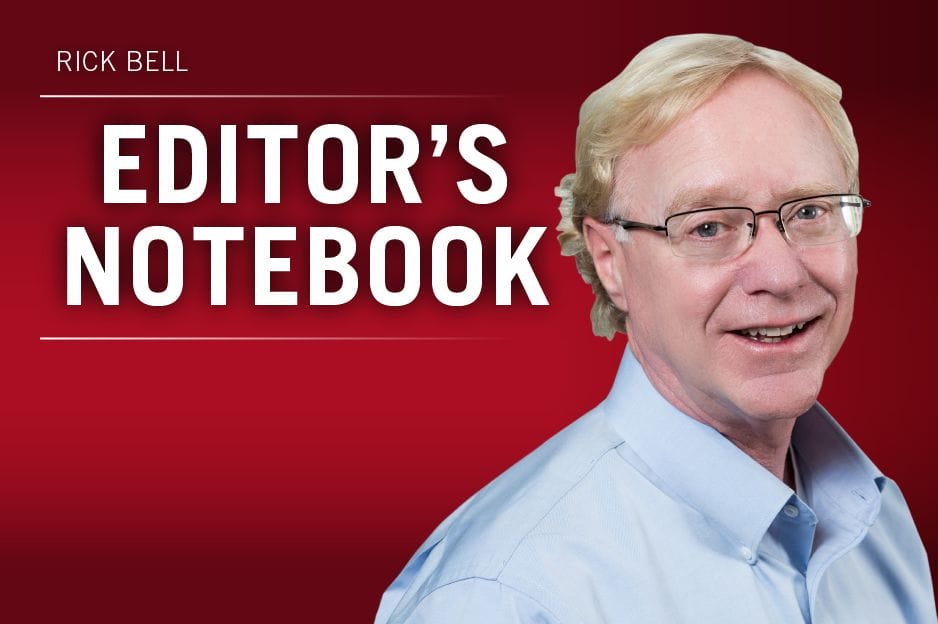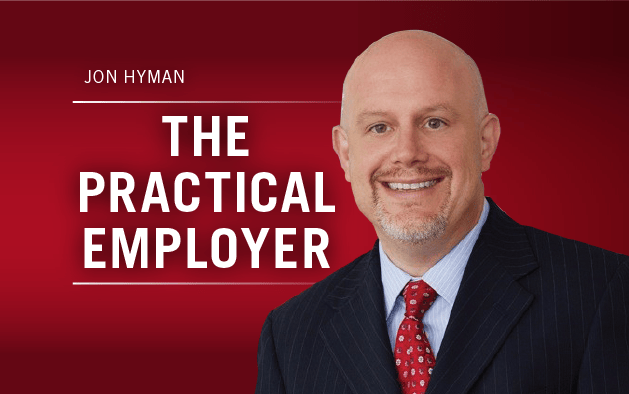I once had two employees whose working relationship blossomed into a workplace romance.
 At first it was an all-out lovefest; footsies under the table during staff meetings, goo-goo eyes at each other at lunch … ain’t love grand? It sure was; until it wasn’t.
At first it was an all-out lovefest; footsies under the table during staff meetings, goo-goo eyes at each other at lunch … ain’t love grand? It sure was; until it wasn’t.
Their chocolate kisses turned sour. Tart words and icy glares soon took a toll on the staff, who soon asked if I would help end the hostilities. I did; and it didn’t go particularly well.
It was clear that there was no mediating this one. Back and forth they went with terse accusations. Exasperated, I finally blurted: “Stop it; just, stop it.”
I was reminded of this nasty affair when late last year newly elected President Donald Trump was confronted by “60 Minutes” reporter Lesley Stahl’s question regarding his supporters’ harassment of Latinos and Muslims. Trump’s response: “And I say, ‘Stop it.’ If it — if it helps, I will say this, and I will say right to the cameras: ‘Stop it.’ ”
I’ll admit, Trump’s statement had conviction — arguably more than mine did. While his “stop it” may temporarily soothe an edgy nation and workplaces teeming with potential to boil over in bias, there’s another two-word phrase Trump is known for that strikes fear into every worker’s heart. “You’re fired” of course is the catchphrase from his reality TV show, “The Apprentice.” But which two-word phrase — a more reassuring “stop it” or brusque “you’re fired” — will define the man running our country for the next four years?
Like Trump, as workplace leaders we must toggle from “stop it” to “you’re fired.” It’s also on us to deliver the workplace tone for clarity, set an example of fairness and honesty. Our new president gets no pass on this, either. The initial days and weeks of Trump’s tenure will provide that roadmap for our nation’s workplaces.
That there’s a massive shift ahead for our political landscape under Trump is without question. His impact on the workplace however, is less apparent.
Let’s define what we know: The courts and their interpretations of employment law will undergo a massive philosophical shift.
Laws and regulations affecting our lives and jobs, from the Affordable Care Act to H-1B immigration policies to minimum wage laws, parental leave issues and especially organized labor, will come under intense scrutiny. The Family and Medical Leave Act and Fair Labor Standards Act will be under the microscope. Boards and agencies including the NLRB, OSHA, the EEOC and the Department of Labor face substantial overhauls.
That much is clear. What remains hazy is how our CEO-president’s provocateur-business leader-outsider persona will influence behavior in workplace corridors and on job sites across America.
When an unknown boss is tapped to lead an organization we check their LinkedIn profile; search for images and background; glean Glassdoor; perhaps even email a friend of a friend who may have a shred of insider knowledge.
There’s no need to play cyber-Sherlock Holmes with Trump. If we were in the dark about his leadership skills, abilities and attitudes, two years of campaigning and his time as president-elect are clarifying his management style.
Building a multibillion-dollar real estate empire is impressive. Beyond that remarkable bottom line, what does a peek into his supervisory toolbox reveal? Under organizational skills: withholding subcontractors’ pay and years of skirting tax laws. Checking the leadership box — a dizzying example of bullying, intimidation and name calling on social media. As a manager … ogling and belittling his beauty pageant contestants and taking “locker room banter” to near-obscene levels.
Maybe you’re all about results and the soft stuff doesn’t matter. Go ahead and look the other way. But with those qualities, Trump as a CEO looks like a lawsuit and extremely pricey settlement waiting to happen. It’s also behavior that I find unfit for any leader, let alone the president.
It would be a shame if HR has to play hall monitor rather than work as a strategic business partner during a Trump presidency. Policies will change; managers have learned to handle that. It’s the toxic attitudes and mounting disrespect for people that present such an ominous challenge during the next four years.
Fortunately, a handful of CEOs and leading employers have already publicly committed to policing their workplaces. President Trump could aid these leaders’ efforts and help curb growing workplace bias by turning his provocative rhetoric into more meaningful dialog with a few more emphatic, heartfelt “stop it” moments.
In your workplace it may take a “stop it” to promote cohesion. A “you’re fired” could even ease fear and distrust. How that message is conveyed will speak volumes about your leadership skills and the quality of your workplace. In this new era, how you say it is just as important as the message you deliver.
Rick Bell is Workforce’s editorial director. Comment below or email rbell@workforce.com.








 The United States is the
The United States is the